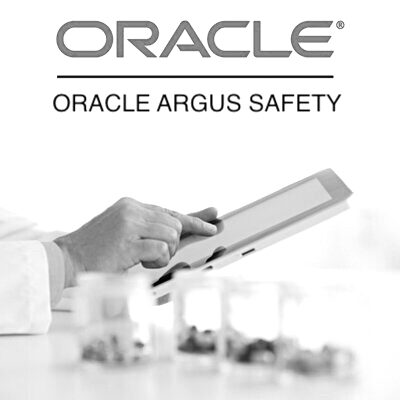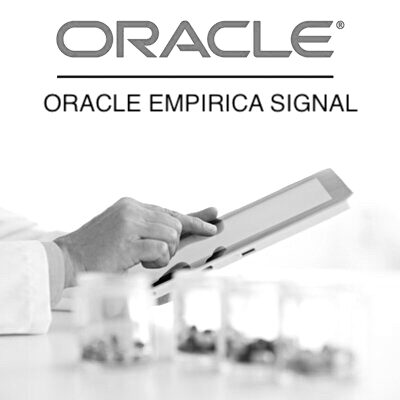Big data and AI in pharmacovigilance
Leveraging Big Data and AI for Safer Medicines: Revolutionizing Pharmacovigilance
Table of Contents
- Introduction
- The Growing Challenge of Pharmacovigilance
- Enter Big Data
- Harnessing AI for Pharmacovigilance
- Case Studies in AI-Enhanced Pharmacovigilance
- Challenges and Ethical Considerations
- Conclusion
- Oracle Argus Safety Essentials
- Oracle Argus Safety Essentials + Console
- Oracle Argus Safety – Live Online
- Oracle Argus Safety + Console – Live Online
- Oracle Empirica Signal
- Oracle Empirica Signal – Live Online
- Diploma in Pharmacovigilance
- Argus Safety – Business Configuration and Administration
Introduction
Pharmacovigilance, the science of monitoring and evaluating the safety of drugs, is undergoing a transformation driven by two powerful technological forces: Big Data and Artificial Intelligence (AI). As pharmaceutical companies, regulatory bodies, and healthcare providers grapple with an ever-expanding pool of data, AI emerges as a vital tool to navigate this sea of information effectively. In this blog post, we will explore how Big Data and AI are revolutionizing pharmacovigilance, enhancing drug safety, and ultimately improving patient outcomes.
The Growing Challenge of Pharmacovigilance
Before delving into the role of Big Data and AI, it’s essential to understand the evolving challenges of pharmacovigilance. In the past, adverse drug reactions (ADRs) were primarily detected through spontaneous reporting systems, which relied on healthcare professionals and patients voluntarily reporting adverse events. This approach, while valuable, had significant limitations:
- Underreporting: A vast majority of ADRs went unreported, leading to a skewed understanding of a drug’s safety profile.
- Delayed Detection: It could take years to identify emerging safety concerns, leading to prolonged exposure of patients to potentially harmful drugs.
- Data Overload: The sheer volume of data generated from various sources, such as electronic health records (EHRs), social media, and scientific literature, became overwhelming for manual review.
- Signal Detection: Traditional methods for identifying safety signals lacked efficiency and precision.
Enter Big Data
Big Data, characterized by its volume, velocity, variety, and veracity, presents both a challenge and an opportunity in pharmacovigilance. The pharmaceutical industry generates enormous volumes of data, from clinical trial results and patient records to social media discussions and sales data. Leveraging Big Data effectively can help address the shortcomings of traditional pharmacovigilance. Here’s how:
- Real-time Surveillance: Big Data allows for real-time monitoring of adverse events, enabling faster detection of safety signals.
- Data Variety: Diverse data sources, including EHRs, claims data, and wearable devices, provide a comprehensive view of a drug’s safety profile.
- Predictive Analytics: Advanced analytics can predict potential safety issues before they become widespread.
- Improved Signal Detection: Big Data analytics can identify subtle safety signals that may have been missed with traditional methods.
Harnessing AI for Pharmacovigilance
While Big Data provides the raw material, AI acts as the processing engine that transforms this data into actionable insights. AI technologies, such as machine learning and natural language processing (NLP), have several applications in pharmacovigilance:
- Automated Data Extraction: AI-powered algorithms can extract relevant information from unstructured sources like medical literature, ensuring that no critical data is overlooked.
- Signal Detection: Machine learning models can identify emerging safety signals by analyzing patterns in adverse event reports, EHRs, and social media conversations.
- Predictive Modeling: AI can predict which patients are at a higher risk of experiencing adverse events, allowing for targeted interventions.
- Case Triage: AI-driven algorithms can prioritize adverse event reports based on severity, helping pharmacovigilance teams focus on the most critical cases.
- Natural Language Processing: NLP enables the analysis of free-text adverse event descriptions, making it easier to understand the context and nuances of reported events.
Case Studies in AI-Enhanced Pharmacovigilance
To illustrate the impact of AI in pharmacovigilance, let’s explore a few real-world examples:
- FAERS and FDA’s Sentinel Initiative: The FDA’s Adverse Event Reporting System (FAERS) and the Sentinel Initiative have adopted AI and Big Data analytics to monitor drug safety. These systems continuously analyze vast amounts of healthcare data, allowing regulators to quickly identify and investigate safety concerns.
- Social Media Listening: Pharmaceutical companies are increasingly using AI to monitor social media platforms for mentions of their drugs. This approach can help detect early signs of adverse events and assess patient sentiment.
- Electronic Health Records: AI-driven algorithms can sift through EHRs to identify patterns of adverse events associated with specific drugs. This enables healthcare providers to make informed decisions about treatment options.
Challenges and Ethical Considerations
While the integration of Big Data and AI in pharmacovigilance holds immense promise, it also comes with challenges and ethical considerations:
- Data Privacy: Ensuring patient data privacy and compliance with data protection regulations (e.g., GDPR) is paramount. Striking the right balance between data access and privacy is a complex task.
- Bias and Fairness: AI algorithms can inherit biases present in the data they are trained on, potentially leading to disparities in safety assessments. Efforts must be made to address and mitigate these biases.
- Interoperability: Integrating data from various sources into a cohesive pharmacovigilance system can be technically challenging due to differences in data formats and standards.
- Regulatory Oversight: Regulators must adapt to the changing landscape of pharmacovigilance, ensuring that AI-driven approaches meet safety and efficacy standards.
Conclusion
The convergence of Big Data and AI is reshaping the field of pharmacovigilance. It offers the potential to enhance drug safety by enabling real-time monitoring, early signal detection, and predictive analytics. However, it also raises important questions about data privacy, bias, and regulatory oversight. To fully harness the benefits of AI and Big Data in pharmacovigilance, stakeholders must collaborate, address these challenges, and prioritize patient safety. In doing so, we can usher in a new era of safer and more effective medicines, ultimately benefiting patients around the world.
You may be interested in…
-
 eLearning + software
eLearning + softwareOracle Argus Safety Essentials
$599.00 -
 eLearning + software
eLearning + softwareOracle Argus Safety Essentials + Console
$799.00 -
 Live Online
Live OnlineOracle Argus Safety – Live Online
$999.00 -
 Live Online
Live OnlineOracle Argus Safety + Console – Live Online
$999.00 -
 eLearning + software
eLearning + softwareOracle Empirica Signal
$599.00 -
 Live Online
Live OnlineOracle Empirica Signal – Live Online
$999.00 -
 eLearning + software
eLearning + softwareDiploma in Pharmacovigilance
$799.00 -
 eLearning + software
eLearning + softwareArgus Safety – Business Configuration and Administration
$599.00

